This is the first part of Japan Diaries series
Click here for the second part
Since my one-night stopover in Tokyo last winter, I’ve been thinking of making a longer trip to Japan and visiting various interesting places around the country. The perfect opportunity came faster than I expected. I was invited to a conference in Hiroshima and I decided to fly in a week earlier. After a lot of on-line research I gave up on crazy ideas like climbing Mt. Fuji alone, and I settled on a more comfortable plan – to get a weekly JR Pass and visit several places on the route from Tokyo to Hiroshima.
My primary focus are historic landmarks and interesting photo locations. I’ve just gifted myself some new camera gear for birthday and I am excited to try some field work.
Hikone Castle
As I’ve already seen some of Tokyo, I decided to skip it all together. After a lengthy process of getting a data SIM card at the airport, I picked up my JR Pass and hopped on the bullet train.
My first destination is the Hikone Castle, some three hours by train south of Tokyo. I choose to visit this place for a couple of reasons. Firstly, there were no reasonable hotels left in Kamakura, which was my option A. Secondly, I had to rule out the Five Lakes District by Mt Fuji because it was too far from my following destination, while Hikone was right midway. Thirdly, I wanted to see one of the typical Japanese castles and I was afraid that the most famous one, Himeji, would be too crowded. And last but not least, I found an awesome hotel with a hot pool (my newly discovered Japanese pleasure) overlooking the castle. What a nice treat after nearly a day long journey from Europe.


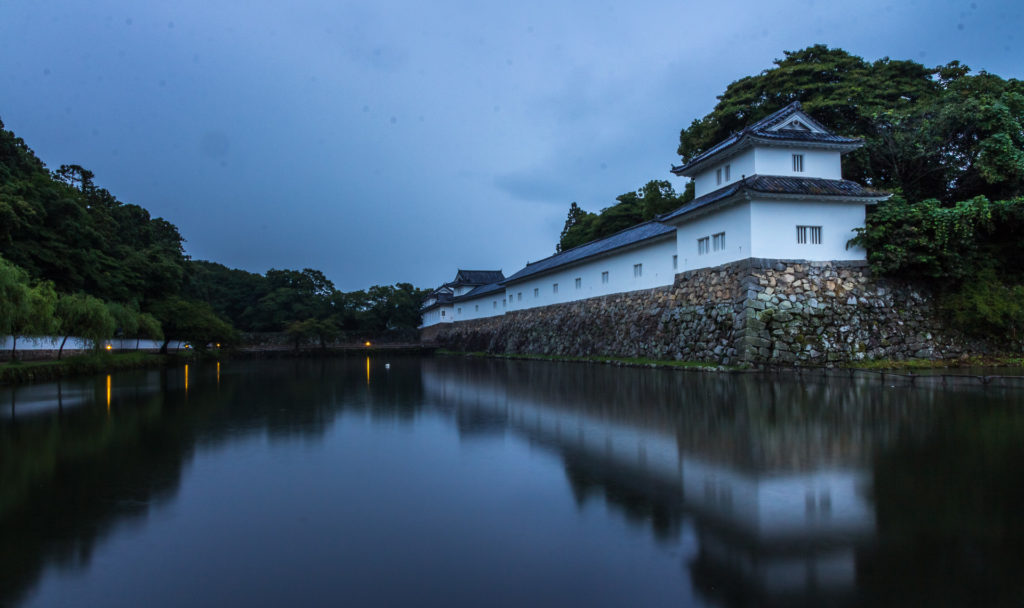
First thing that struck me in Japan was how early it gets dark. I expected to make some sunset photos in Hikone — but instead, it got dark just after my train left Tokyo. Later I realized that Japan has no daylight savings. So when I got to Hikone, I just had dinner, soaked in the hot pool and planned to get up early to catch the sunrise. Although the bed was comfortable, I was probably too excited (or jet-lagged), woke up around 2AM and couldn’t sleep anymore. Around 4:30 AM I grabbed my tripod and camera and went for a walk around the castle. (This may not seem so early to some people but I am an extremely nocturnal being and I get to see the sunrise maybe twice a year, usually because I am still up in the morning — so this was a unique experience :)
The air outside felt great — warm and slightly humid, like on holiday in Italy. Much better than my air-conditioned room. Streets were quiet and you could hear some kind of cicadas or crickets buzzing in the trees incredibly loudly. I only took a few photos before it started raining and I decided to head back to the hotel because I had no umbrella.
After a truly delicious breakfast I set off to the castle again, happy that it’s not raining anymore. My luck ended a few minutes after I entered the castle grounds and the rain wouldn’t stop pouring until I left the town. Thoroughly wet, I bought an emergency umbrella and walked carefully, trying not to slip on the stone paths.

Military base in disguise
Hikone Castle is one of the best preserved castles in Japan. While most other castles have been conquered, or damaged in World War II and re-built from a scratch, Hikone hasn’t changed since 400 year ago when it was built. Some blog posts noted that in contrary to renovated castles, this one has no elevators. Why this is a big deal I understood only when I saw the original stairs – or perhaps slopes – that were probably built as security measure because the castle served as military fortress. Nowadays, narrow stairs are mounted on the slopes, but the climb is still challenging, especially for elderly Japanese tourists who constituted the majority of visitors I encountered. Another thing that derives from the military nature of the castle is that the interior is really hollow. Forget Versailles, this is another kind of castle. A square hall with ryokan-style rooms in the middle. What a contrast with how fancy it looks from outside.
And funny fact no. 1 — in Japan, you have to take off your shoes when visiting castles and temples. And Japanese always wear socks. I didn’t. So I ended up walking through the castle barefoot, soaked by the rain, leaving a wet trail behind…






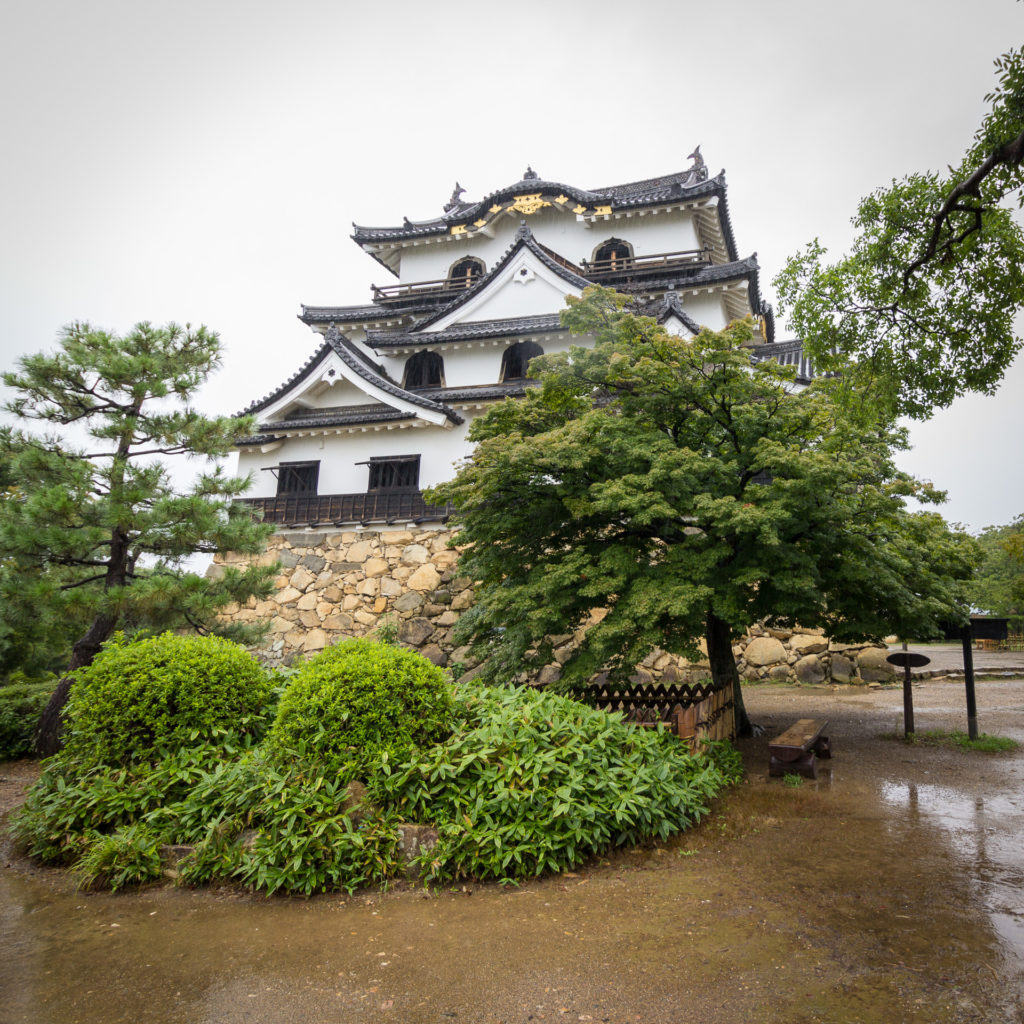
The castle is located on a hill overlooking Lake Biwa. Due to the rain I haven’t got any views of the lake, but the garden below the castle was beautiful even in the rain.

It even stopped raining for a moment. But not enough for the local tea & cake terrace to open. So I headed back to the hotel, excited about my next destination, Mount Koya, that was just a few hours train ride away.



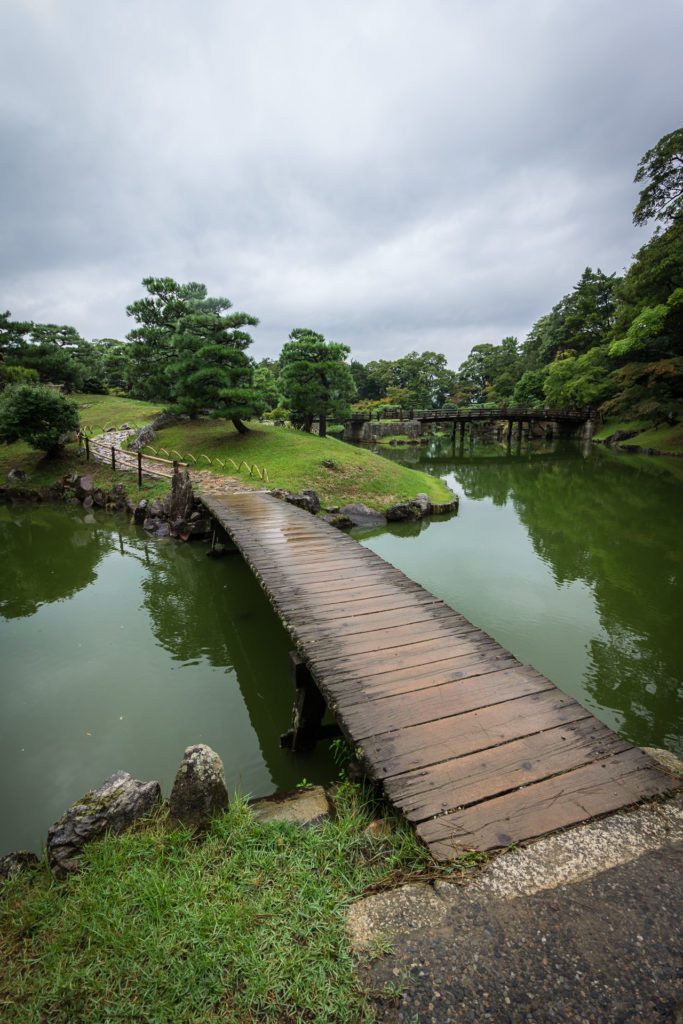
Mount Koya
Mount Koya, or Koyasan, is a unique mountain village with perhaps the highest concentration of Buddhist temples ever. It was established around the year 800 by religious leader Kobo Daishi and became the centre of Shingon Buddhism (read more about it here). It’s on the UNESCO world heritage list. As it takes a few hours to get there from any major city, it’s not among the most frequent tourist destinations. However, it seems to be gaining popularity among western travelers, as the possibility of spending a night in one of the local Buddhist temples is quite tempting.
I arrive to Mount Koya early enough to be able to get some sunset photos. However, I was so tired that I just collapsed and woke up for dinner. Afterwards, I set off to the main sight of Mount Koya, the Okunoin cemetery, which is the largest cemetery in Japan, with more than 120 000 tombstones, old and new. My research said that the cemetery is particularly beautiful at night, and it proved to be true.

Temple lodging
I spent the night at the Daienin temple. The routine in all the temples is pretty much the same. You get a traditional ryokan-style room (with a futon mat on the floor), an early dinner and a early breakfast. All food is vegetarian and quite delicious. In the evening you can bath in the shared hot pool (gender separated) and very early in the morning you can attend monks’ prayer ceremony. The ceremony may seem a bit lengthy for someone who is not particularly spiritual and doesn’t understand Japanese, but it definitely is a worthy experience. Prayer rooms are beautifully decorated and smell nice, like incense.

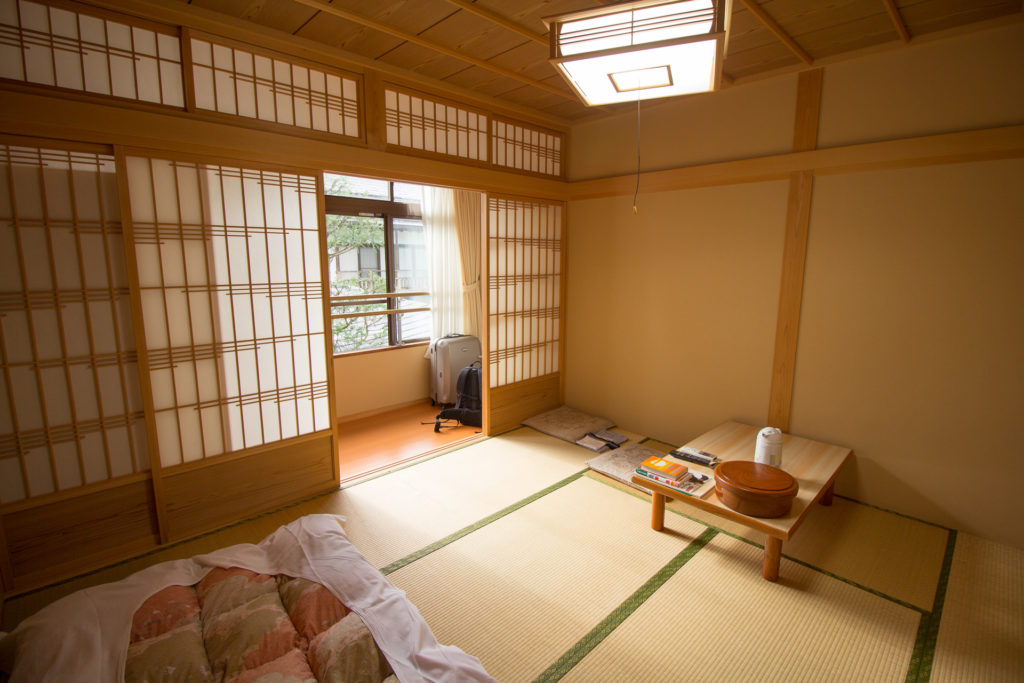



Garan temple complex
If you’ve stayed at a temple, your morning starts pretty early. By 8AM you’re done with breakfast and ready to go sightseeing. The advantage of the early morning is that the tourists, who are coming just for a day trip, haven’t arrived yet. My plan was to start with the cemetery but it started raining again, so I turned around and headed to the other side of the village, towards the Garan temple complex. I had some discount coupons for entrance which were included in the train ticket, so everything was really cheap.
On the way I visited the Kongobuji Temple which has a stunning stone garden and ryokan-style rooms with beautifully painted panels (forbidden to photograph, but you can google it).
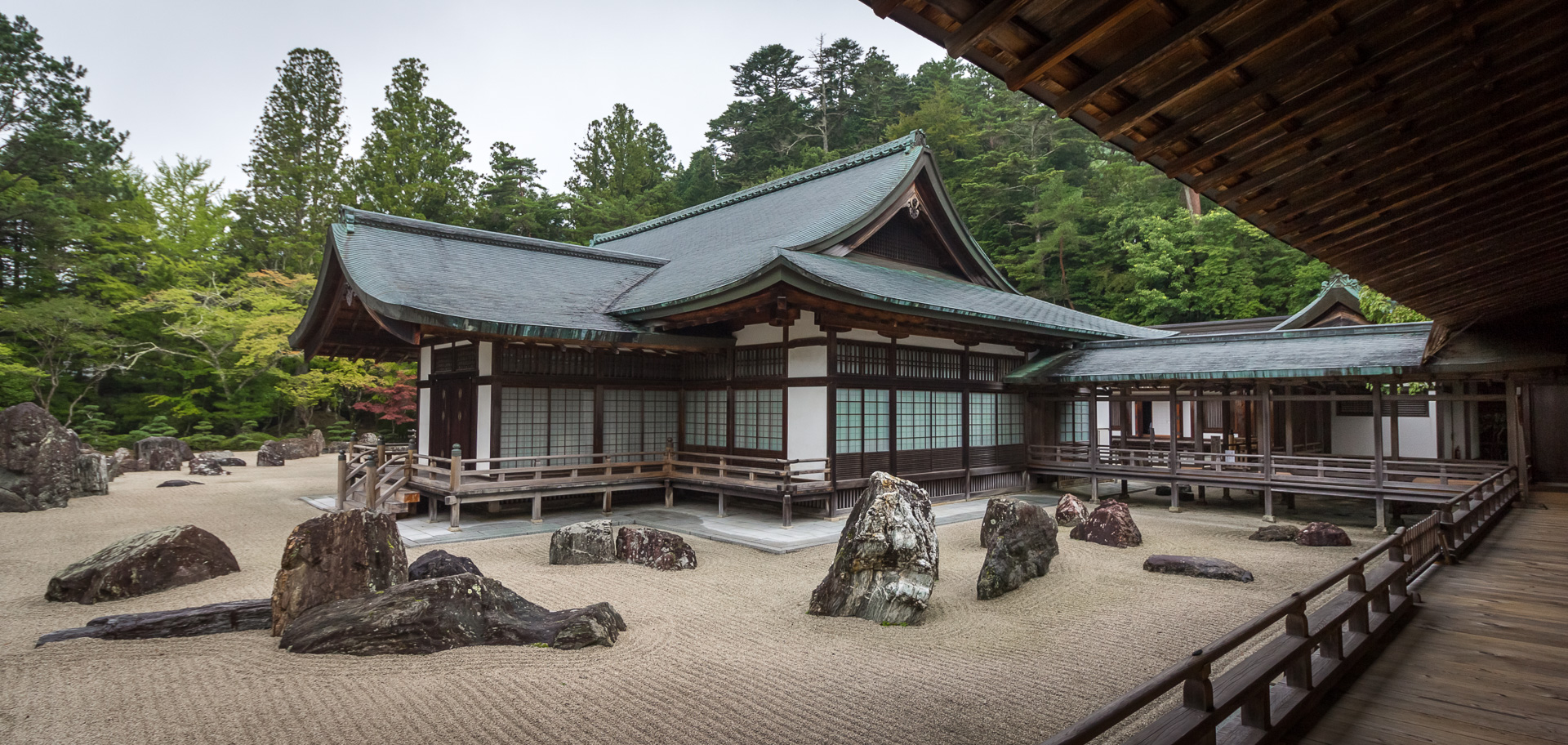
The Garan complex includes two big temples and a plenty of smaller ones. I didn’t really investigate into their history and purpose — there’s not much info in English anyway, and all the names and stories are just too confusing for an international visitor. Instead, I enjoyed the beauty and atmosphere of the place. Most visitors were Japanese and some of them were obviously on a spiritual pilgrimage, concentrated and sometimes chanting prayers in groups. Mount Koya is one of the most sacred places in Japan and it’s visited by many worshipers who come to perform small rituals such as displaying messages near temples.








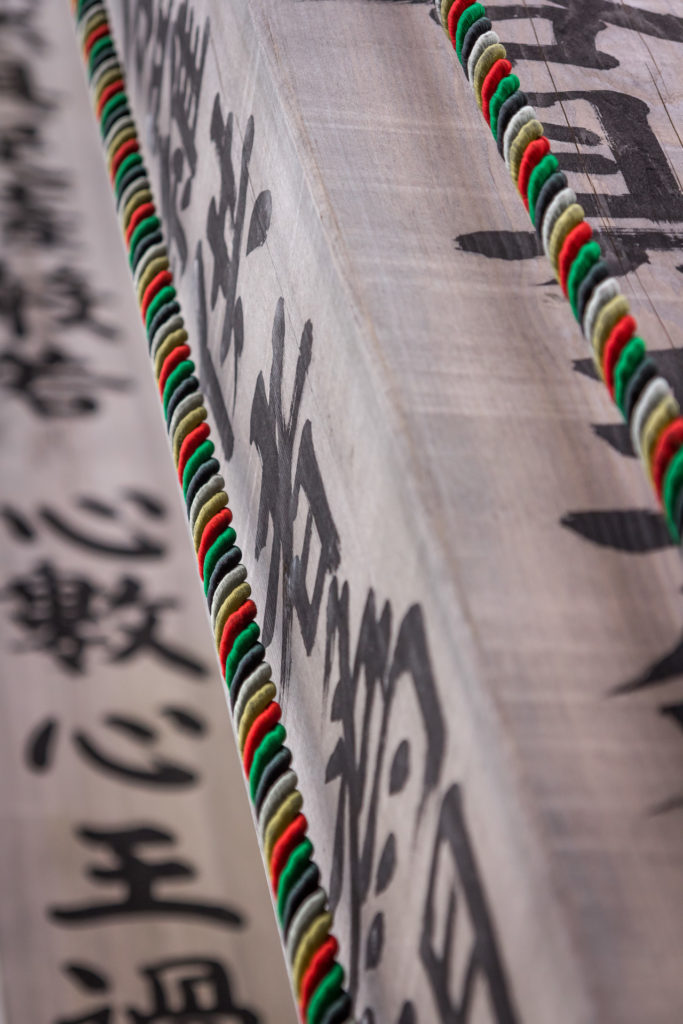
Okunoin
Okunoin is a huge cemetery with incredible atmosphere day and night. At noon, it was obviously busier than during my last night visit, but it kept the special atmosphere and didn’t feel crowded. There are two main walking paths through the cemetery — I took the longer one that winds amidst ancient tombstones for almost two kilometers. It is absolutely stunning and incomparable to anything I have ever seen. The atmosphere might be similar to the old Jewish cemetery in Prague – but hundred times bigger and located in a beautiful forest.
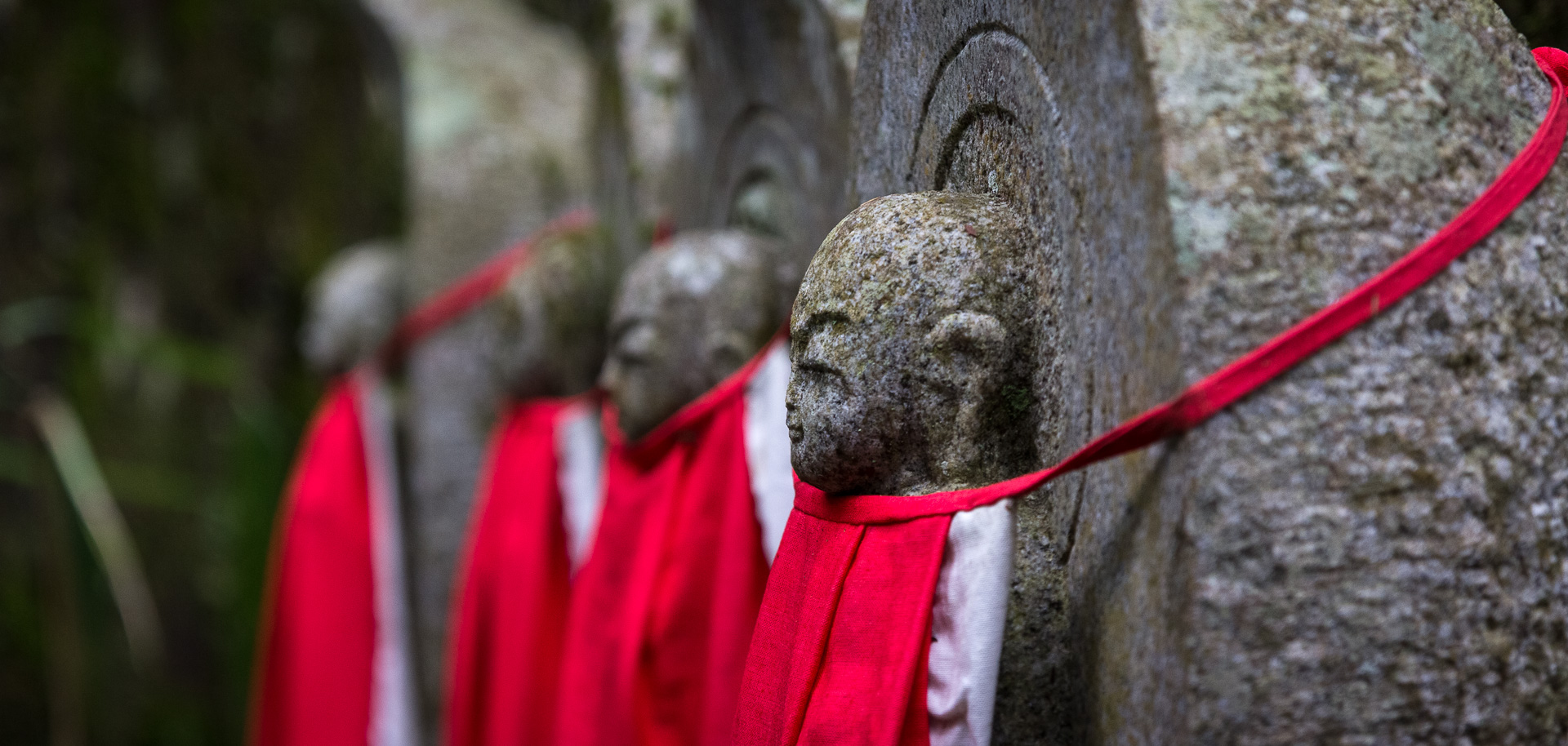
The large tombs, perhaps those of well-known families, include one big torii gate and a couple of high column structures. There are thousands of Buddha statues everywhere. Many are dressed in red bibs, for reasons unknown to me (if you know, send me a message). The red really stands out among all the grey and green.





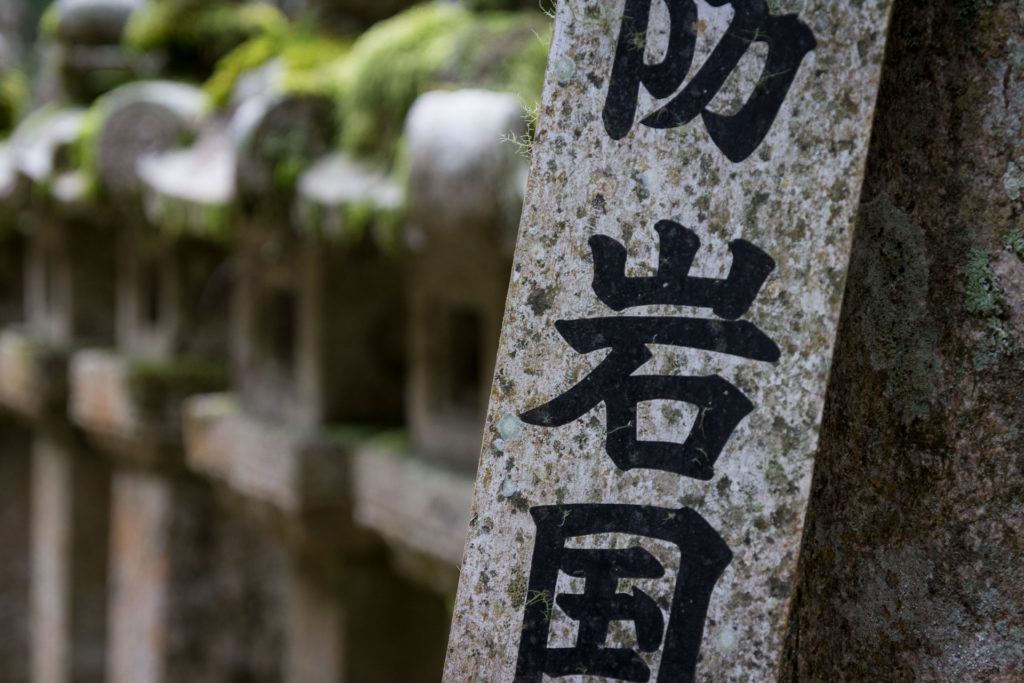


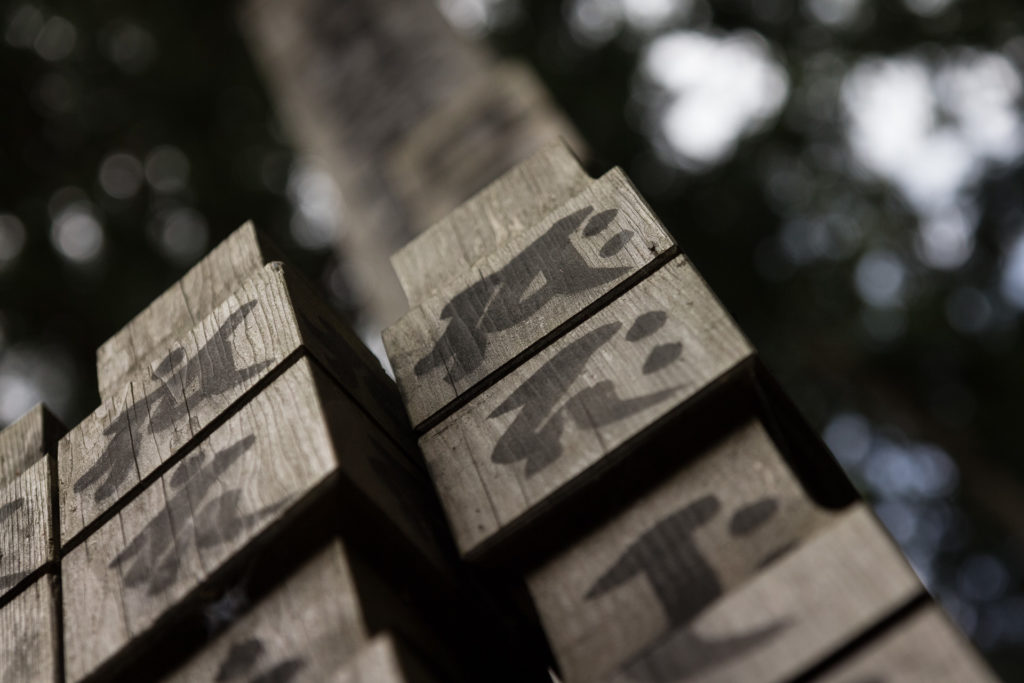
The end of the walk gets crowded. The two paths join before the mausoleum where Kobo Daishi, the founder of Mount Koya, “rests in eternal meditation”. Hundreds of people come here to pay homage and perform rituals. A river separates the mausoleum from the cemetery. Beyond the bridge, it is not allowed to take photos. The mausoleum is located behind a big temple. The walk around is impressive. Japanese visitors chanting, burning aroma sticks, reading mantras from books, and ringing bells… I won’t stay long because this place should be kept for those who came here for spiritual reasons.






Apparently, the legacy of Kobo Daishi is strong, many people come here in their life, and wish to be buried here in their death. Even big companies have built tombs at the cemetery and you can also see memorials to dead soldiers. The cemetery is constantly growing. Looking at the new graves you can try to imagine how it looked when it was all new. But I think it just gets better with age…

